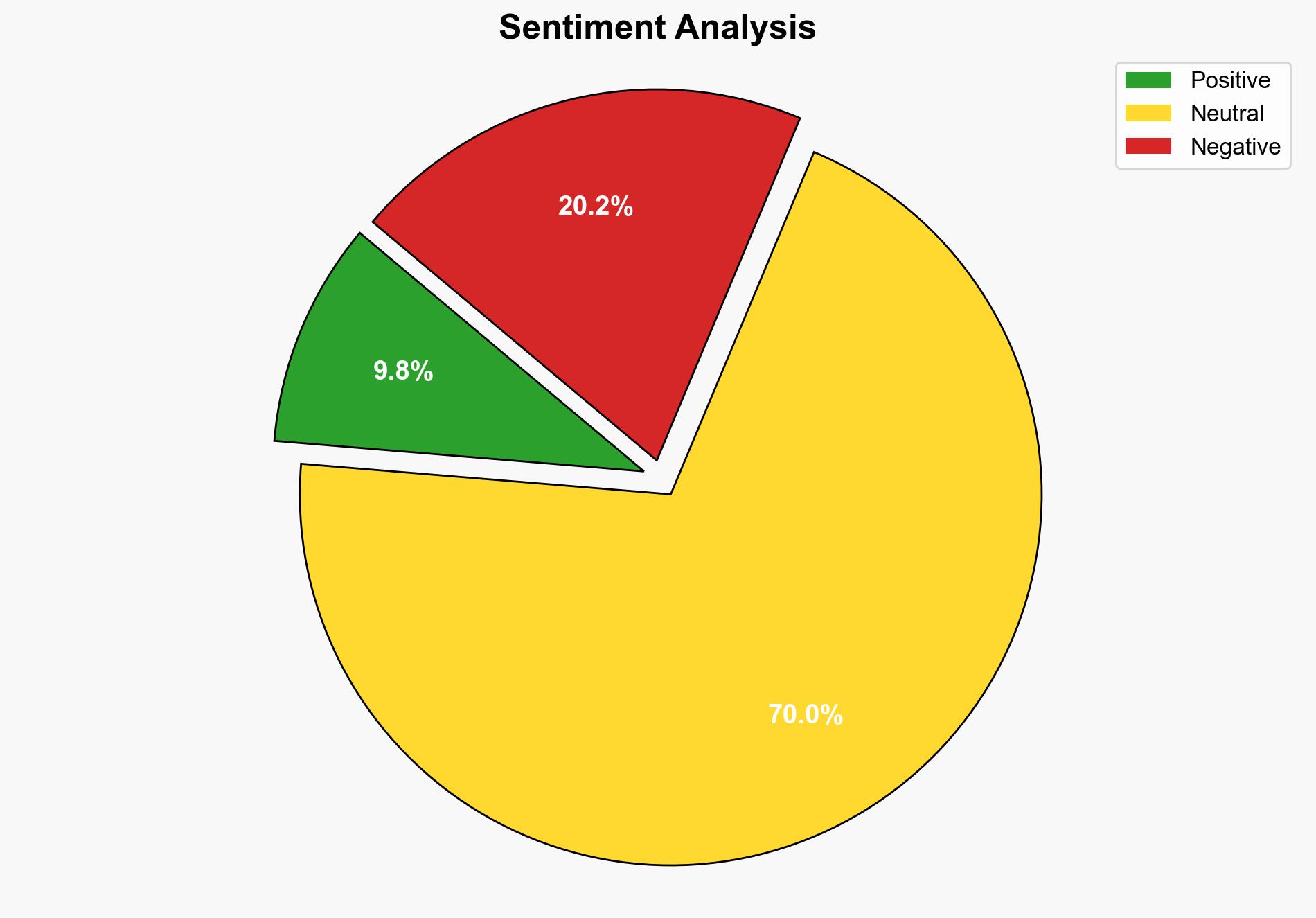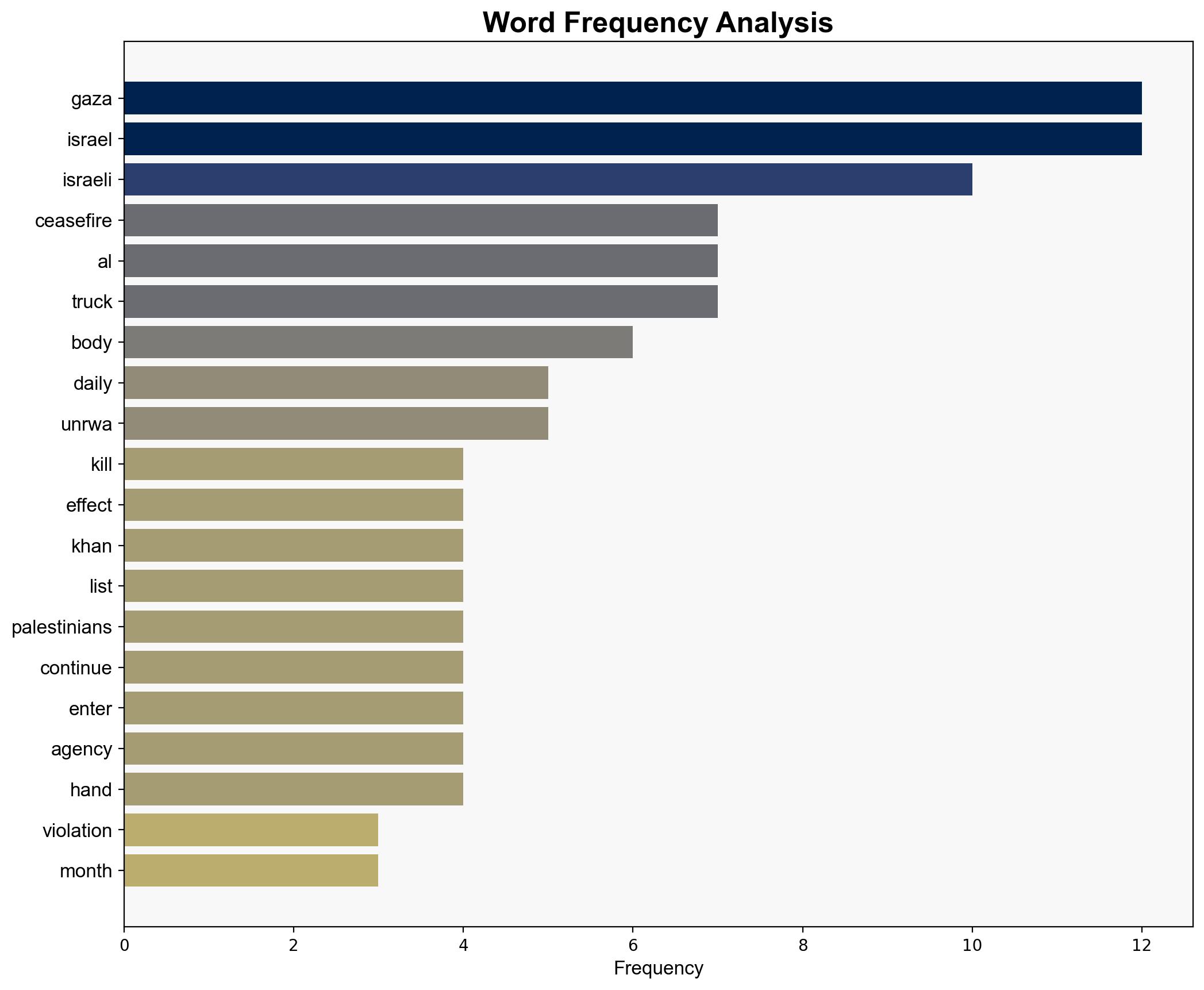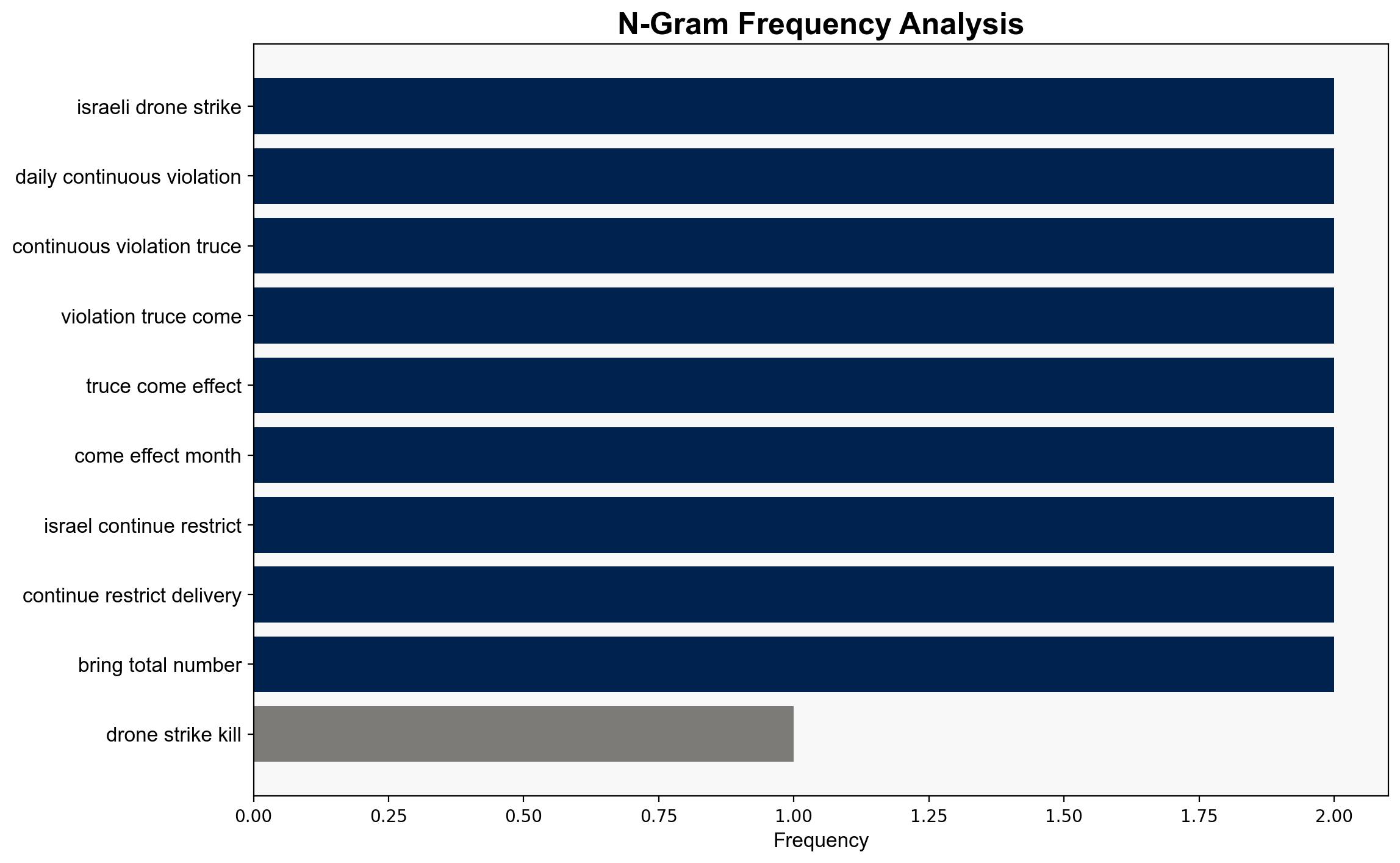Israeli drone strike kills two in Gaza as ceasefire violations mount – Al Jazeera English
Published on: 2025-11-10
Intelligence Report: Israeli drone strike kills two in Gaza as ceasefire violations mount – Al Jazeera English
1. BLUF (Bottom Line Up Front)
The most supported hypothesis suggests that the ongoing Israeli military actions in Gaza, including the recent drone strike, are part of a broader strategy to maintain pressure on Hamas and other militant groups, despite the ceasefire. Confidence level: Moderate. Recommended action: Engage in diplomatic efforts to reinforce the ceasefire terms and address humanitarian needs in Gaza to prevent further escalation.
2. Competing Hypotheses
1. **Hypothesis A**: The Israeli drone strike is a calculated move to deter Hamas and other militant activities, maintaining a strategic advantage despite the ceasefire.
– **Supporting Evidence**: Continuous violations reported by Hamas; systematic destruction of infrastructure; restrictions on humanitarian aid.
– **SAT Applied**: ACH 2.0 indicates alignment with Israel’s historical military strategy of deterrence.
2. **Hypothesis B**: The drone strike and other military actions are reactive measures to immediate threats posed by militant groups, not a deliberate strategy to undermine the ceasefire.
– **Supporting Evidence**: Israeli military claims that the individuals targeted posed a threat; ceasefire violations attributed to both sides.
– **SAT Applied**: Bayesian Scenario Modeling shows a lower probability due to lack of consistent evidence of immediate threats.
3. Key Assumptions and Red Flags
– **Assumptions**: Hypothesis A assumes Israel prioritizes long-term security over short-term ceasefire adherence. Hypothesis B assumes immediate threats justify military responses.
– **Red Flags**: Inconsistent reporting on the nature of threats; potential bias in source reporting from Al Jazeera; lack of independent verification of events.
– **Blind Spots**: Limited insight into internal Israeli decision-making processes; potential underreporting of Palestinian militant activities.
4. Implications and Strategic Risks
– **Escalation Risks**: Continued military actions could lead to a full-scale conflict, drawing in regional actors and destabilizing the region further.
– **Humanitarian Impact**: Ongoing restrictions and infrastructure damage exacerbate humanitarian crises, potentially fueling further unrest.
– **Geopolitical Dimensions**: Strained relations with international bodies and neighboring countries could impact diplomatic efforts and regional alliances.
5. Recommendations and Outlook
- Engage in multilateral diplomatic efforts to reinforce the ceasefire and address humanitarian needs in Gaza.
- Monitor for signs of escalation and prepare contingency plans for regional conflict scenarios.
- Scenario Projections:
- **Best Case**: Reinforced ceasefire leads to reduced hostilities and improved humanitarian conditions.
- **Worst Case**: Escalation into broader conflict involving regional actors.
- **Most Likely**: Continued low-level hostilities with intermittent ceasefire violations.
6. Key Individuals and Entities
– **Hamas**: Condemns Israeli actions and accuses them of violating the ceasefire.
– **John Whyte**: UNRWA Senior Deputy Director, highlights humanitarian challenges due to Israeli restrictions.
7. Thematic Tags
national security threats, regional focus, humanitarian crisis, ceasefire dynamics





